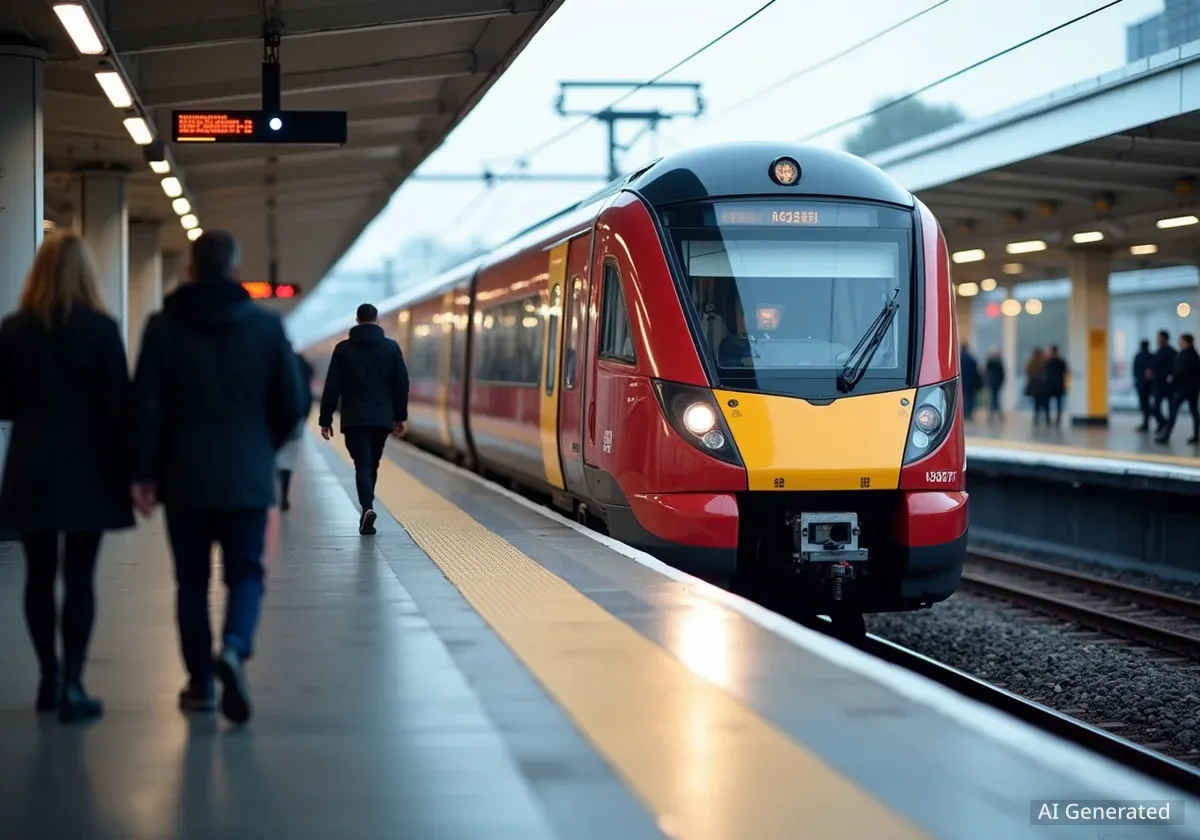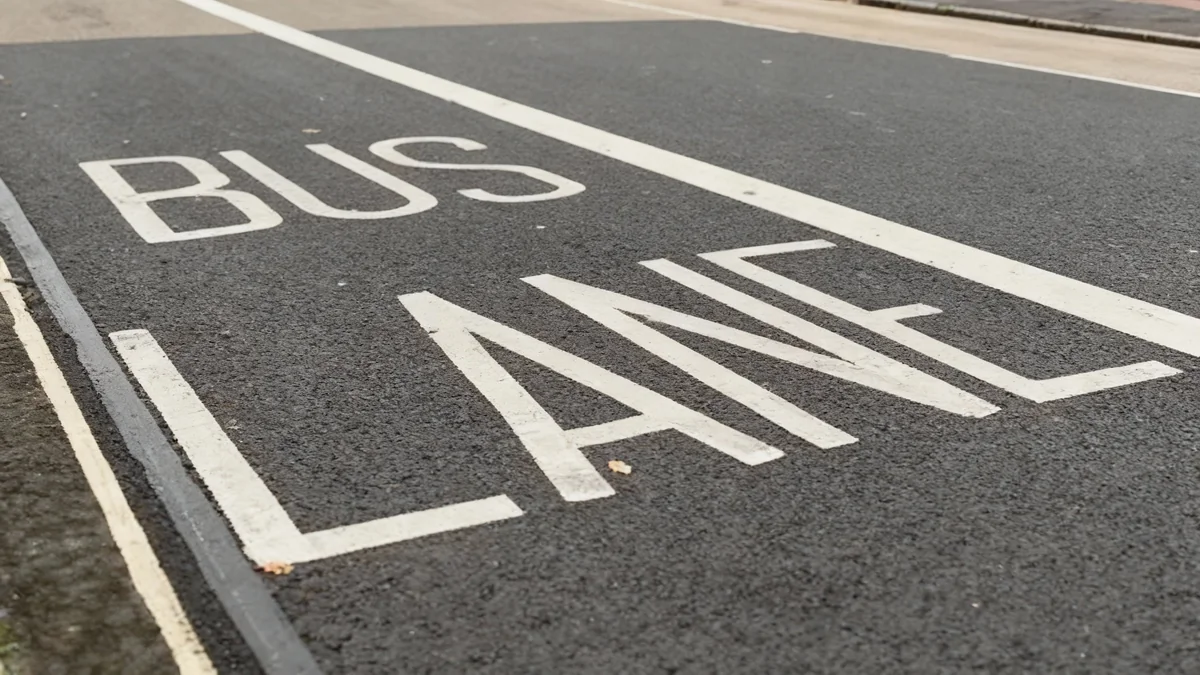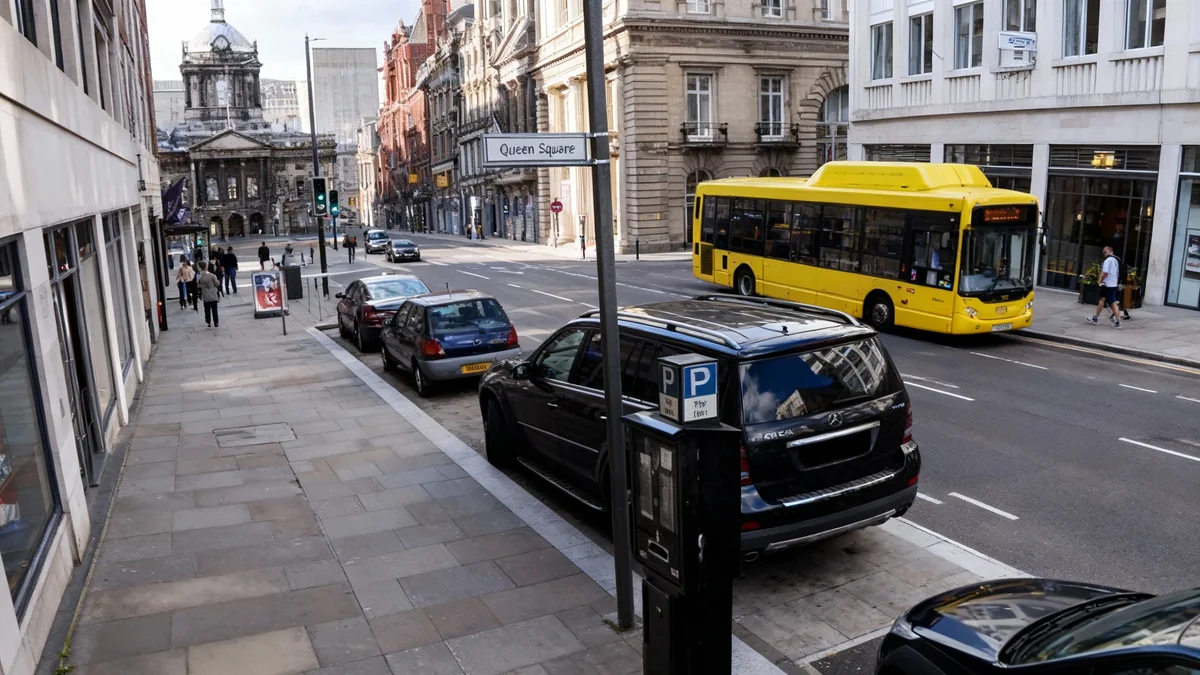The Liverpool City Region's £500 million investment into the Merseyrail network has officially concluded, marking a significant milestone in public transport for the area. The project has delivered a full fleet of 53 new Class 777 trains and has made the network one of the most accessible in the United Kingdom, with major upgrades completed across numerous stations.
Key Takeaways
- A £500 million investment programme in the Merseyrail network is now complete.
- The full fleet of 53 new, state-of-the-art Class 777 trains are now in passenger service.
- Over 80% of the Merseyrail network now offers step-free access from street to platform.
- The project was funded and delivered by the Liverpool City Region Combined Authority.
- The new trains are 60% more energy efficient than the previous fleet.
A New Era for Passenger Travel
Passengers across Merseyside are now experiencing a transformed journey thanks to the introduction of the full fleet of Class 777 trains. These modern units, built by Swiss manufacturer Stadler, replace a fleet that had been in service for over 40 years.
The new trains offer a range of improved features designed for comfort and convenience. This includes wider aisles, more space for wheelchairs and bicycles, USB charging points, and real-time passenger information screens. The advanced sliding step technology at each door ensures level boarding, removing the gap between the train and the platform edge.
"This is not just an upgrade; it's a complete reimagining of what local rail travel can be," said Steve Rotheram, Metro Mayor of the Liverpool City Region. "We've delivered a publicly owned, state-of-the-art railway that is built by the people, for the people. It's a testament to what can be achieved with devolution and local control."
The introduction of the new fleet has been phased over the last 18 months, with the final unit entering service this month. The project aims to improve reliability and increase overall network capacity, particularly during peak travel times.
Transforming Network Accessibility
A central goal of the modernisation programme was to create a more inclusive and accessible transport system. The project has funded significant infrastructure upgrades at stations across the network, focusing on providing step-free access for all passengers.
Station Upgrades and Step-Free Access
With the completion of recent works at stations like Hillside, Broad Green, and Birkenhead Park, the Merseyrail network has reached a major accessibility milestone. New lifts and ramps have been installed, removing barriers for passengers with mobility challenges, parents with pushchairs, and those carrying heavy luggage.
Accessibility by the Numbers
Following the recent upgrades, over 80% of stations on the Merseyrail network now have step-free access from the street to the platform. This makes it one of the most accessible rail networks in the entire UK.
The unique design of the Class 777 trains complements these station upgrades. The intelligent sliding step technology automatically deploys at every stop, bridging the gap to the platform. This feature eliminates the need for manual ramps at the majority of stations, providing spontaneous and independent travel for wheelchair users.
The Journey of the £500m Investment
The ambitious plan to modernise the Merseyrail network was initiated several years ago by the Liverpool City Region Combined Authority. The £500 million funding package was secured through a combination of central government grants and local investment, showcasing a major commitment to the region's infrastructure.
Project Background
The decision to invest in a new fleet was made to replace the ageing Class 507 and 508 trains, which had served the region since the late 1970s. The Combined Authority took the step of purchasing the new trains outright, making them publicly owned assets, which is a rare model for local rail services in the UK.
Key partners in the project included train manufacturer Stadler, who established a maintenance depot in Kirkdale, creating skilled engineering jobs in the process. Network Rail was also instrumental in delivering the necessary platform and power supply upgrades to accommodate the new technology.
Economic and Environmental Benefits
The impact of this modernisation extends beyond passenger comfort. The project is expected to deliver significant economic and environmental benefits for the Liverpool City Region for decades to come.
Improved connectivity makes the region a more attractive place to live, work, and invest. A more reliable and efficient public transport system supports local businesses and provides better access to employment and education opportunities.
A Greener Way to Travel
The new Class 777 trains are also a major win for the environment. They are constructed from lightweight aluminium and feature regenerative braking systems, which capture energy when the train slows down.
- The new trains are 60% more energy efficient than the old fleet.
- They consume 20% less energy overall compared to their predecessors.
- The improved service aims to encourage more people to switch from cars to public transport, reducing road congestion and carbon emissions across the region.
Future of the Merseyrail Network
While the completion of this £500m project is a landmark achievement, transport leaders are already looking to the future. The new trains are designed to operate on an expanded network, and plans are progressing for further extensions.
The opening of the new Headbolt Lane station in Kirkby serves as a model for future growth. The trains' battery technology allows them to travel beyond the existing third-rail network, opening up possibilities for new services to areas like Wrexham, Warrington, and Skelmersdale.
According to Merseytravel, discussions are ongoing regarding these potential network extensions, which would further integrate the Liverpool City Region's transport system and boost its economic potential.





